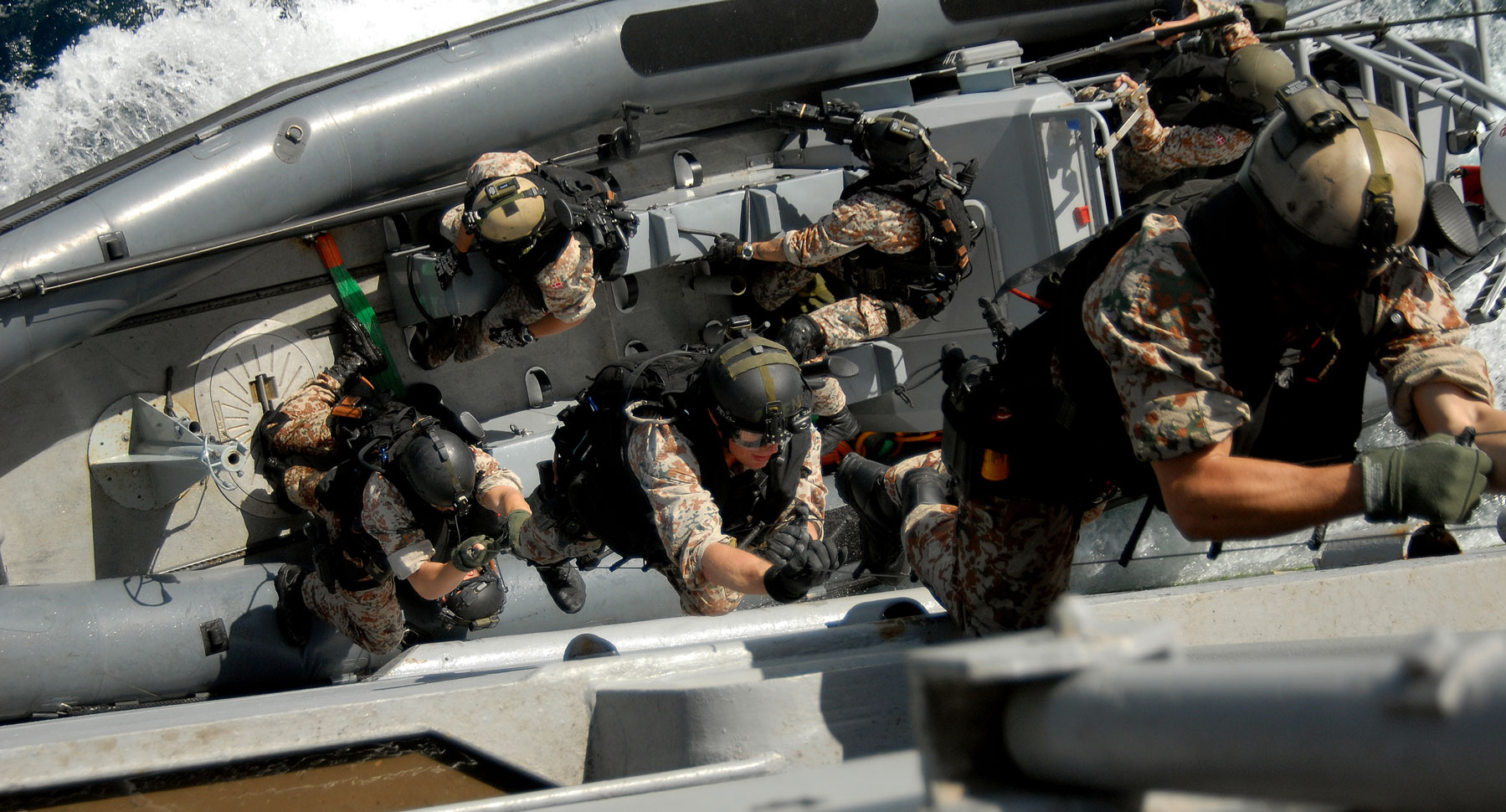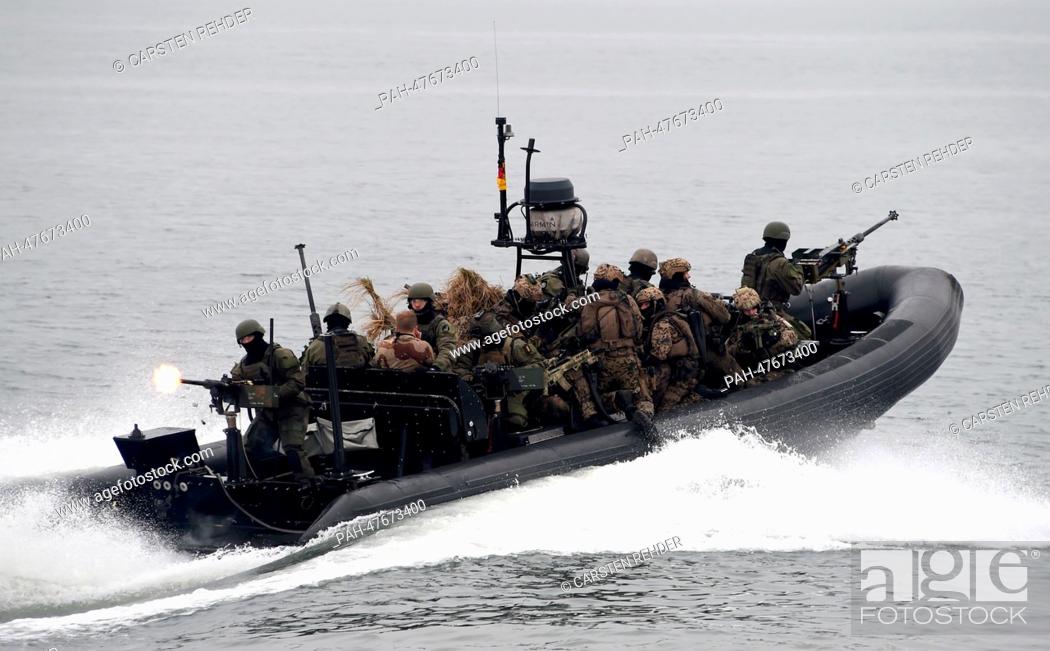- Reaction score
- 18,405
- Points
- 1,280
Navy News / May 15, 2019
The RCN is excited to recognize the professionalism and dedication of sailors who demonstrate leadership and a commitment to operational excellence by pursuing speciality training through the creation of three new specialist skill badges for members of the Naval Tactical Operations Group, Naval Security Team and Naval Boarding Party.
These sailors apply their skills in challenging operational environments and this recognition is long overdue.
“These new skill badges recognize specialized qualifications that enhance our capabilities across the spectrum of naval operations,” said Commodore Waddell, Director General of Naval Strategic Readiness. “I think it’s an outstanding development and critically important to recognize our sailors for their hard work and determination that contributes to our operational effectiveness at sea.”
The Naval Tactical Operations Group (NTOG) specializes in advanced boarding operations. They are a highly capable, rapidly deployable unit that is having tremendous effects on the high seas. This year alone, NTOG has worked alongside trusted international partners in North and West Africa and a detachment is embarked in Her Majesty’s Canadian Ship Regina supporting Operation ARTEMIS. HMCS Regina along with its NTOG detachment have been contributing to multinational efforts that keep the high seas safe and secure. The team has conducted multiple interdictions, seizing and destroying over 9,000 kilograms of illegal narcotics.
“For a member to put on this badge they must first successfully complete an arduous five day selection process and then be selected for and complete the even more demanding six month Maritime Tactical Operator’s Course (MTOC),” said Lieutenant-Commander Wil Lund, Commanding Officer of the NTOG. “It rewards years of personal training, preparation and dedication required to achieve this level of performance. To be finally be able to stand shoulder to shoulder with fellow operators and be part of the NTOG team as an equal is both humbling and exhilarating as the adventure is really just beginning.”
Wearing the badge comes with a huge burden of responsibility, said LCdr Lund. You are no longer a student. “Now you are an operator, driven by a relentless pursuit of excellence who must earn your place every day and represent the unit at all times both in Canada and around the world.”
The badges reflect a modesty of character and often escape notice. For those who do notice, the typical exchange is: “That’s pretty cool, how do I get one?” to which an operator typically jokes: “It’s pretty easy, it only takes five days.”
In addition to NTOG, Naval Boarding Parties (NBP) deploy with ships on operations all over the world. These sailors dedicate additional time to training and are able to operate in hazardous and challenging environments that require professional knowledge and skill above and beyond their general trade qualifications.
For Able Seaman Sebastien Barsetti, a part of HMCS Charlottetown, boarding party on Operation REASSURANCE, the most exciting part of being a member of the Naval Boarding Party is “climbing into the rigid-hulled inflatable boat, and splitting away from the side of our own ship, to conduct a boarding on another vessel. It’s an exciting challenge and once I’m in the RHIB, all worries are gone and all I can think about is how thankful I am to be there and to get to do this as my job.”
The Naval Security Team is a relatively new capability, designed to provide an extra layer of land and sea-based security to deployed RCN assets. The unit is self-sustaining and is able to operate in established or rudimentary sea ports anywhere in the world. Since its inception NST has supported multiple Operations including Operation PROJECTION Asia-Pacific where they provided force protection to HMCS Vancouver in Fiji and on Operation REASSURANCE where they provided force protection to HMCS St John’s in Denmark and HMCS Ville de Quebec in Greece.
“The NST allows the crew to take much-needed leave during longer deployments or to focus on other tasks, such as maintenance. I’m very happy the Naval Security Team is now a part of our spectrum of capabilities. Recognizing each of these sailors has been a long time coming,” said Commodore Waddell.
To be eligible for an RCN specialist skill badges, personnel must be in the Canadian Armed Forces (CAF) as of April 1st, 2019 or later, wear the naval uniform and successfully complete one of the following courses: Naval Tactical Operations Qualification (NTOQ); Naval Boarding Party Basic Qualification (NBP Basic), and/or Naval Security Team Qualification (NSTQ).
The design of the badges was inspired by the functions their respective teams perform and feature symbols that foster pride in those who have earned the right to wear them. The shield shape represents the protection of Canada and its interests and more specifically the enhanced force protection capability enshrined in the Naval Tactical Operations Group, Naval Boarding Party and the Naval Security Team. The trident is an ancient symbol of naval power, as seen in common depictions of Neptune and Britannia.
Personnel who achieve more than one qualification shall be authorized to wear the highest qualification badge only. The order of precedence for these badges (highest to lowest) is NTOQ, NBP Basic and NSTQ.
Cloth versions of the badges will be made available in the future. Production of these badges through the national clothing procurement authority may take 12-24 months. In the interim, an allotment will be provided to training establishments to award during future course graduations. Those previously granted a NTOQ, NBP or NSTQ qualification will be presented the badge when they become available nationally.
Naval Combat Dress (NCD) and Naval Environment Combat Uniform (NECU) variants of these badges will be available when the national clothing procurement authority introduces these badges. Once the cloth badges are introduced, the existing NBP badge (blue badge with cross sword below a naval crown) will no longer be authorized for wear.
For more details and instructions on placement of the badges, please refer to the CANFORGEN: INTRODUCTION OF THE ROYAL CANADIAN NAVY SPECIALITY SKILL BADGES.
http://www.navy-marine.forces.gc.ca/en/news-operations/news-view.page?doc=new-skill-badges-recognize-unique-naval-operations-qualifications%2Fjvmqlycc&fbclid=IwAR34ca4EH_cM7psc3z7qijG7tQO2iOHo4YmPjRhABJPdsKG94BOYziuRZ0Y%27






